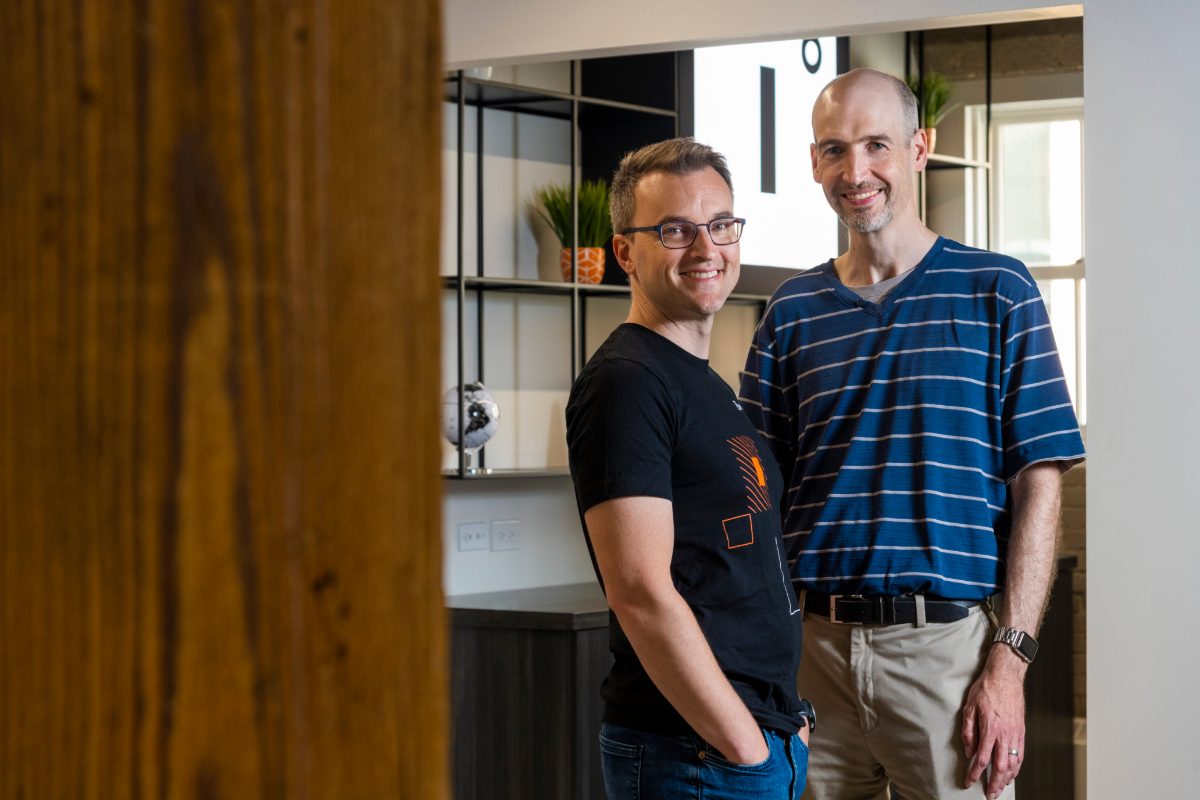
Nathan Sturtevant (right), professor in the Department of Computing Science, is heading up the collaboration with video game company Improbable. Aaryn Flynn (left), is general manager (North America) of Improbable-and a UAlberta computing science alumnus. Photo credit: John Ulan
Computing scientists at the University of Alberta are engaging in a new research partnership with Edmonton-based company Improbable, an exciting-and widely accessible-application of their cutting-edge work.
"Research on pathfinding has broad applications, including helping vehicles or robots to navigate on their own," said Nathan Sturtevant, professor in the Department of Computing Science, who is heading up the collaboration with Improbable. "In video games, it's the foundation for how characters move around the game world. As we improve this technology, the way those characters move becomes more efficient, more realistic, and more believable."
Sturtevant runs the MovingAI lab on campus, which focuses on artificial intelligence research to enable programs to figure out how to move around three-dimensional space.
"There are many types of research. Some of our work is on more fundamental algorithms and is more abstract. But, as in cases like this, it's always exciting to adapt our work so that millions of people can directly experience and benefit from the improvements we make," said Sturtevant.
An international company, Improbable opened its Edmonton studio in 2018. But the company isn't just focused on building games. Rather, its work centres on creating a new engine called SpatialOS. As Aaryn Flynn, general manager (North America) of Improbable explains, it's a set of tools that other developers will then be able to use to create their own games-and the Edmonton office is using it to develop a game to share its potential.
"Here in Edmonton, we're building a flagship game to demonstrate the power of SpatialOS in a meaningful way. Deciding to do this in Edmonton really draws on the strengths of the talent here," said Flynn, who is also a computing science graduate of UAlberta. "That goes for both people we can hire in the community as well as those in the talent network that we can collaborate with-and that's where the impressive research at UAlberta comes in."
Pathfinding and breaking new ground
Sturtevant has already had applications for his research in the games industry, having collaborated with Edmonton video game developer BioWare to create the pathfinding used in the popular video game Dragon Age: Origins. Flynn has also worked with UAlberta in the past while general manager at BioWare, making the new collaboration an exciting opportunity to again work with his alma mater on technology for video games.
"We've begun our new collaboration by working on pathfinding. We've updated and improved approaches to pathfinding significantly," says Sturtevant. "This new work provides more flexibility at runtime and will support interesting character behaviors that weren't possible before."
Sturtevant sees opportunities for research collaboration with industry as one of many ways UAlberta research benefits the local community and industry. Providing a world-class education to students and building local talent is another:
"There are a lot of interesting problems that industry can face that might not occur to us in the lab-working with industry helps us focus on problems that are both challenging and relevant. And in turn, UAlberta's video games certificate program has been very helpful to the local games industry," said Sturtevant. "The certificate gives students experience working in multi-disciplinary teams-which is valuable for our students no matter where they end up working."
Interested in learning more about artificial intelligence research at the University of Alberta? Check out the Faculty of Science artificial intelligence hub to learn more about the research, courses, and latest news from campus.